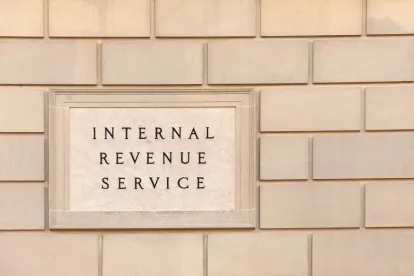Given the chance that the DOL Fiduciary Rule will not be delayed before April 10, the IRS has now issued a non-enforcement policy for excise taxes that mirrors the DOL policy. As we explained in our March 14 alert, there is some possibility (although slight) that the proposed delay of the Rule will not be effective before its scheduled applicability date. To address that, the DOL issued a temporary non-enforcement policy in Field Assistance Bulletin 2017-1 (the “FAB”). But concern remained because there was no corresponding relief for prohibited transaction excise taxes. This led to the IRS action.
As of today, delay by April 10 seems more likely. The regulation governing the Rule’s applicability date has been sent from the DOL to the Office of Management and Budget (OMB). We don’t yet know how quickly the OMB will turn it around, or exactly what the regulation provides. However, we continue to expect that it will delay the applicability date by 60 days, and that it will be finalized and published in the Federal Register before April 10. If this is correct, the relief provided by the IRS policy (and the FAB) would not be necessary. However, they provide an “insurance policy” in case this does not occur.
Here are the key takeaways for advisers and financial institutions:
-
If the Rule and related exemptions are not delayed until after April 10, many advisers and financial institutions would become fiduciaries during the “gap period.” This would be true, even for recommendations that might not be “fiduciary” advice under existing rules.
-
Many forms of compensation – such as commissions, 12b-1 fees and management fees for proprietary products – would be prohibited absent compliance with the Best Interest Contract Exemption (BICE) or another new or amended exemption under the Rule.
-
Unless an exemption is satisfied, a two-tiered excise tax applies to prohibited transactions. The first tier is 15 percent of the “amount involved”; this increases to 100 percent if the transaction is not corrected within certain time frames.
-
The IRS policy provides that no excise taxes will be imposed for non-compliance with the Rule and related exemptions during a “gap period” – that is, under the same circumstances as the DOL non-enforcement policy. This would apply, for example, where BICE Transition Period disclosures have not been furnished to retirement investors.
-
If the Rule and its related exemptions do become applicable on April 10 with no delay, under the FAB, advisers and financial institutions would have a “reasonable period” after that decision is announced to come into compliance. The IRS policy would similarly apply under these circumstances, meaning that prohibited transactions triggered by temporary non-compliance would not cause advisers and financial institutions to become liable for excise taxes.
We continue to expect that the Rule’s applicability date will be delayed by 60 days (to June 9), and that this will become “official” prior to April 10. Nonetheless, the IRS policy fills an important void that the FAB could not. Taken together, they provide meaningful relief if a gap period should occur or if the Rule is not delayed.









 />i
/>i

